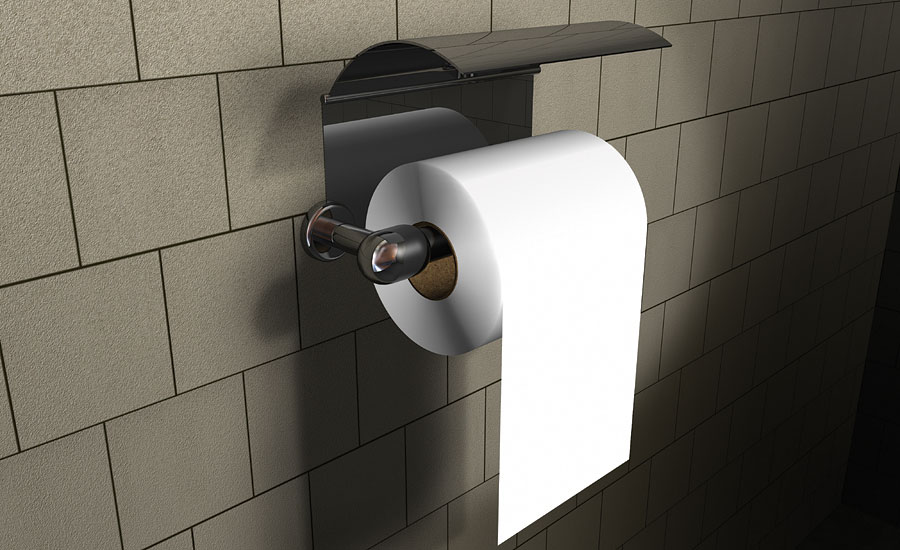On Sept. 28, PERC 2 was published. It is available to download, free of charge. This is a must read for every plumbing engineer. If you are not familiar with PERC, it stands for Plumbing Efficiency Research Coalition. Their research involves solid waste transport in drainage systems using high-efficient water closets.
If you haven’t read PERC 1, I would suggest you first download and read PERC 1 before you review PERC 2, which really is a continuation of the testing that was done in the original.
I had the distinct honor of being one of the peer reviewers of PERC 2. Studying the details during the peer review was fascinating. You get to dig deep into the research. My hat goes off to Senior Vice President of IAPMO Pete DeMarco. He spearheaded the research done under PERC and is well-suited for this task, having previously worked at American Standard. DeMarco understands the need to optimize the flushing of water closets while keeping the plumbing system working.
As a peer reviewer, let me say the report was very well-written with well-presented results. PERC should be highly commended for the report.
It should first be noted that both PERC reports do not evaluate water closets’ flushing performance. Both reports clearly state this in the beginning. In fact, they have nothing to do with water closets. When testing the drain line performance, they use specially made devices to inject the water into the piping to simulate a flushing water closet.
Flushing it away
One of the most interesting parts of the PERC study is the evaluation of different styles of toilet paper. What was first revealed in PERC 1 was the impact of drain-line performance with the use of the softer, heavier toilet papers. In an effort to add comfort to the users, some of these toilet papers end up stressing the drainage piping.
PERC 2 notes that perhaps some of the toilet paper manufacturers paid attention to the PERC 1 report. PERC 2 indicates some of the toilet paper had changed between the reports. The result is toilet paper that flushes better; something manufacturers of toilet paper did not consider all that much until PERC 1. They seemed more concerned with softness and number of plies.
However, there was more than the performance of different toilet papers to the report. The follow-up testing evaluated lower flush volumes, as well as systems connected to 3-in. piping. The initial study was done on 4-in. drainage piping.
It was assumed the lowering of pipe size to 3-in. diameter would help the performance of the drainage system. In fact, the study finds drainage pipe size has very little impact on performance. While there was a difference it was not enough to be considered an impact on the overall performance of the drainage system.
This seems to be contrary to what plumbing engineers think will happen in a drainage piping system: The smaller the pipe the better the performance for transporting solids. Other studies have indicated this to be the case.
However, the other studies did not have the long runs such as PERC used. Those studies also did not test actual different types of toilet paper being flushed. What PERC discovered is the solids dropped out of suspension and needed additional flushes to be completely removed at about the same rate between 3-in. and 4-in. pipe.
The greater impact was found with the type and amount of toilet paper, the total amount of solids, pitch of the pipe and the flushing volume. Each of these had a major impact on the performance of the drainage system. One could almost assume the greater the flush volume, the better the drainage system performance. That was true, however, what really showed up was how much an impact there is when you drop the flush volume to 1 gal. or less.
Toilet paper ban?
The type of toilet paper and the amount of toilet paper also had a major impact on performance. I actually had one colleague call me and ask if I thought that they should ban certain types of toilet paper in one of the green buildings he designed. This was the conclusion he drew reading PERC 1. While that sounded like a good idea, he didn’t translate the toilet paper performance to the overall design of his building.
One has to remember that PERC studies an individual flush with a long horizontal run. Once you start adding fixtures to the drainage piping, you change the dynamics inside the pipe. The limitations on types of toilet paper probably should be considered when having long horizontal runs of piping for one or two fixtures.
Another question I often am asked is, “Will PERC have an impact on the plumbing codes?” The answer would have to be, “Not directly.” However, indirectly the report may impact certain code changes.
The PERC reports were not published to directly impact plumbing code requirements. What could happen is further research or further analysis of results such that it leads to changes in the code. Some are assuming a change in fixture unit sizing, but that was not intended to be a part of this study.
The results of the research are published after being analyzed through a computer program. This program allows a comparison of multiple changes that could impact the drainage performance. As a result, you will not find the raw data in the PERC 2 report. To look at the raw data, you have to go to the website identified in the report. If you are a typical engineer, you are going to want to review the raw data. This helps put everything into better perspective when reading the results.
Over the next year, DeMarco will be making presentations on PERC 2. If he comes to your area or to a meeting you are attending, be sure to join the seminar. Not only will DeMarco give you a great presentation, he will answer any questions you have on the study and the results of PERC 2.
Don’t hesitate and please go download PERC 2 right now at www.plumbingefficiencyresearchcoalition.org.
This article was originally titled “Following it up” in the October 2015 print edition of PM Engineer.


